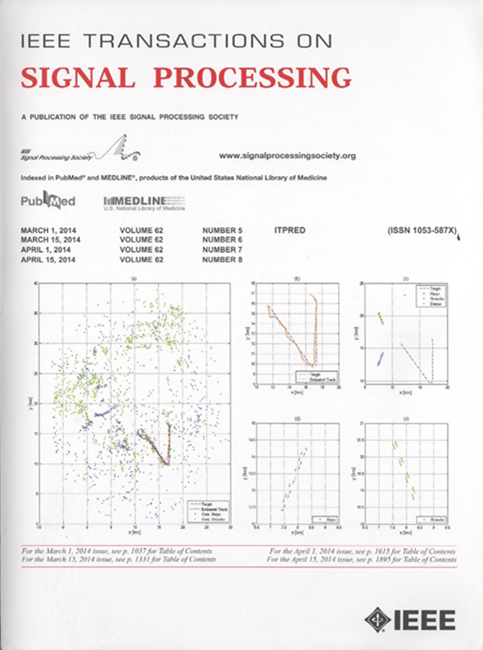平滑数据的分布式图学习:贝叶斯框架
IF 4.6
2区 工程技术
Q1 ENGINEERING, ELECTRICAL & ELECTRONIC
引用次数: 0
摘要
图学习是一个新兴的领域,旨在从数据中学习合理的图结构,在图信号处理(GSP)中起着至关重要的作用,并在各种数据处理领域得到应用。然而,现有的方法主要集中在学习确定性图,因此不适合涉及拓扑随机性的应用,如流行病学模型。在本文中,我们开发了一个层次贝叶斯模型来解决图学习问题。具体来说,平滑信号的生成模型是通过将图拓扑转换为自表达系数并为每个顶点加入单独的噪声来制定的。在每条边上施加定制的概率分布,以表征有效的图拓扑约束以及边级概率信息。在此基础上,我们推导了贝叶斯图学习(BGL)方法,以分布式方式有效地估计图结构。特别是,基于特定的概率依赖关系,我们将广义近似消息传递(GAMP)消息和信念传播(BP)消息混合推导出一系列消息传递规则,迭代逼近后验概率。人工和真实数据的数值实验表明,与最先进的方法相比,BGL可以更准确地学习图结构,并增强机器学习任务。本文章由计算机程序翻译,如有差异,请以英文原文为准。
Distributed Graph Learning From Smooth Data: A Bayesian Framework
The emerging field of graph learning, which aims to learn reasonable graph structures from data, plays a vital role in Graph Signal Processing (GSP) and finds applications in various data processing domains. However, the existing approaches have primarily focused on learning deterministic graphs, and thus are not suitable for applications involving topological stochasticity, such as epidemiological models. In this paper, we develop a hierarchical Bayesian model for graph learning problem. Specifically, the generative model of smooth signals is formulated by transforming the graph topology into self-expressiveness coefficients and incorporating individual noise for each vertex. Tailored probability distributions are imposed on each edge to characterize the valid graph topology constraints along with edge-level probabilistic information. Building upon this, we derive the Bayesian Graph Learning (BGL) approach to efficiently estimate the graph structure in a distributed manner. In particular, based on the specific probabilistic dependencies, we derive a series of message passing rules by a mixture of Generalized Approximate Message Passing (GAMP) message and Belief Propagation (BP) message to iteratively approximate the posterior probabilities. Numerical experiments with both artificial and real data demonstrate that BGL learns more accurate graph structures and enhances machine learning tasks compared to state-of-the-art methods.
求助全文
通过发布文献求助,成功后即可免费获取论文全文。
去求助
来源期刊

IEEE Transactions on Signal Processing
工程技术-工程:电子与电气
CiteScore
11.20
自引率
9.30%
发文量
310
审稿时长
3.0 months
期刊介绍:
The IEEE Transactions on Signal Processing covers novel theory, algorithms, performance analyses and applications of techniques for the processing, understanding, learning, retrieval, mining, and extraction of information from signals. The term “signal” includes, among others, audio, video, speech, image, communication, geophysical, sonar, radar, medical and musical signals. Examples of topics of interest include, but are not limited to, information processing and the theory and application of filtering, coding, transmitting, estimating, detecting, analyzing, recognizing, synthesizing, recording, and reproducing signals.
 求助内容:
求助内容: 应助结果提醒方式:
应助结果提醒方式:


